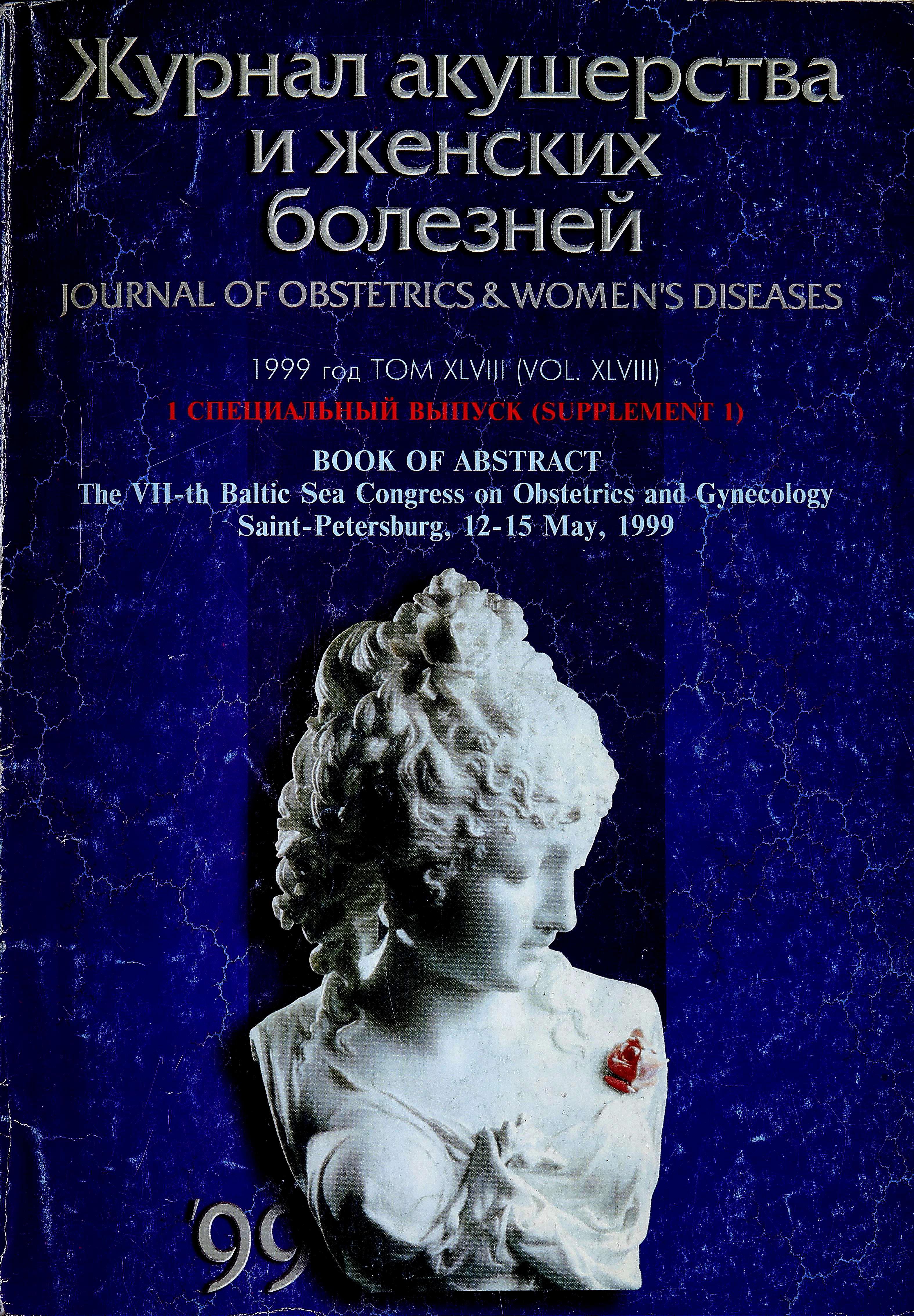Laparoscopic treatment of uterine myomas - long-term results and pregnancy outcome
- Authors: Lehmann-Willenbrock E.1, Mettler L.2, Jonat W.2
-
Affiliations:
- Christian-Albrecht-University Kiel
- Christian-Albrecht-University
- Issue: Vol 48, No 5S (1999)
- Pages: 98-98
- Section: Articles
- Submitted: 17.02.2022
- Accepted: 17.02.2022
- Published: 15.12.1999
- URL: https://journals.eco-vector.com/jowd/article/view/101049
- DOI: https://doi.org/10.17816/JOWD101049
- ID: 101049
Cite item
Full Text
Abstract
When uterine myomas are enucleated by pelviscopy (laparoscopy), it is more difficult to find all myomas and to close the hysterotomy than in laparotomy. It has been proposed that later pregnancies are more prone to complications, in particular uterus rupture, and that amelioration of symptoms is inferior. Since 1988, we have performed more than 95% of the myomectomies in our clinic by pelviscopy. In the years 1995-1999, we sent questionnaires to 1143 patients who had undergone an enucleation of uterine myomas at least 2 years previously.
Keywords
Full Text
When uterine myomas are enucleated by pelviscopy (laparoscopy), it is more difficult to find all myomas and to close the hysterotomy than in laparotomy. It has been proposed that later pregnancies are more prone to complications, in particular uterus rupture, and that amelioration of symptoms is inferior. Since 1988, we have performed more than 95% of the myomectomies in our clinic by pelviscopy. In the years 1995-1999, we sent questionnaires to 1143 patients who had undergone an enucleation of uterine myomas at least 2 years previously.
Results: 65% answered the questionnaire. Metrorrhagia had decreased from 31 to 10%, menorrhagia from 39 to 21%, hypermenorrhea from 37 to 21%, dysmenorrhea from 71 to 46%, dyspareunia from 31 to 11%, abdominal pressure from 49 to 22%. 32% of the patients had no complaints other than sterility before the operation. Of the others, 56% found their complaints completely gone after the operation, 35% registered an improvement, and only 9% observed no change at all. Of the patients with an improvement of their complaints, 94% found that the improvement was permanent. During follow-up (four years on average), 1,8% of the patients had a second myoma enucleation, 3,1% a hysterectomy. 90% of the patients would opt for the same procedure retrospectively, 7% would not, the rest gave no answer to that question. Of the patients who desired to become pregnant, about half were successful: 93 children were born, once twins. There were 51 vaginal deliveries, 41 cesarean sections. The average birth weight was 3440 g. Only two singletons weighed less than 2500 g, none less than 2400 g. The twins weighed about 1300 g each. There were 22 spontaneous abortions (with 8 mature babies later), 3 therapeutic abortions, and two ectopic pregnancies (with one mature baby later). No uterus ruptures were reported. Pelviscopic myomectomy is an adequate alternative to laparotomy in most cases, and it may substitute hysterectomy in many cases.
About the authors
E. Lehmann-Willenbrock
Christian-Albrecht-University Kiel
Author for correspondence.
Email: info@eco-vector.com
Germany, Kiel
L. Mettler
Christian-Albrecht-University
Email: info@eco-vector.com
Germany, Kiel
W. Jonat
Christian-Albrecht-University
Email: info@eco-vector.com
Germany, Kiel
References
Supplementary files







